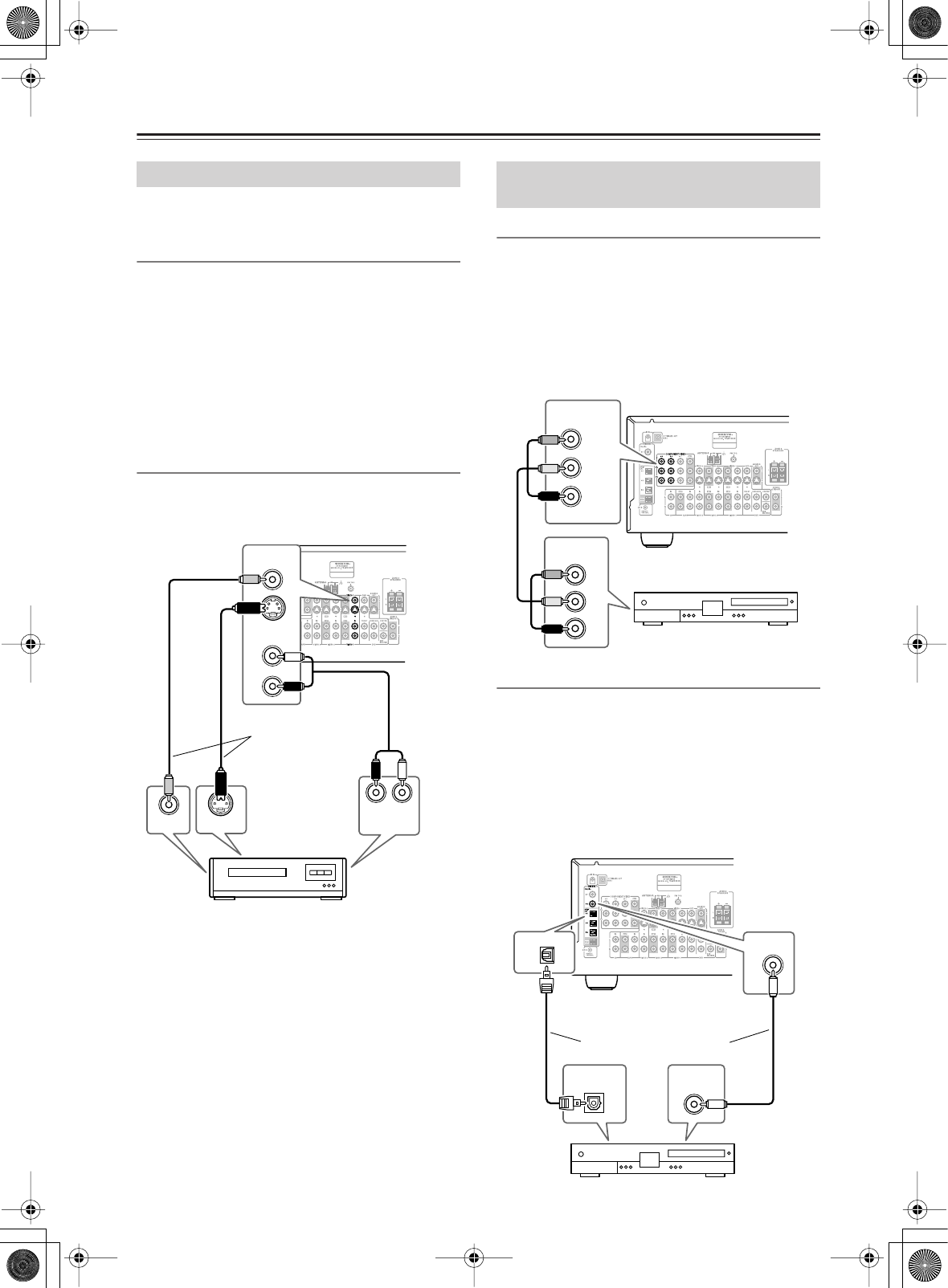
30
Connecting the AV Receiver
—Continued
This section shows how to connect a VCR for playback
so that you can watch videos via the AV receiver.
Video Connections
• Use an S-Video cable to connect the AV receiver’s
S VIDEO 1 IN jack to a S-Video output on your VCR,
as shown.
OR
• Use a composite video cable to connect the AV
receiver’s V VIDEO 1 IN jack to a composite video
output on your VCR, as shown.
An S-Video connection provides better picture quality
than a composite video connection.
Audio Connections
• Use an analog audio cable to connect the AV
receiver’s VIDEO 1 IN L/R jacks to an analog audio
output on your VCR, as shown.
Video Connections
With the initial settings of the TX-SR603/603E/8360,
the VIDEO 1 input source is set for the COMPONENT
VIDEO IN 2 jacks. If you connect the device to the
COMPONENT VIDEO IN 3 jacks, see page 44.
Use a component video cable to connect the AV receiver’s
COMPONENT VIDEO IN2 or 3 jacks to a component
video output on your HDD/DVD recorder, as shown.
Your TV must also be connected via component video.
Audio Connections
If you connect to a digital audio input, you'll need to
assign it (see page 43).
• Use an optical digital audio cable to connect one of the
AV receiver’s OPTICAL DIGITAL IN jacks to an
optical output on your HDD/DVD recorder, as shown.
OR
• Use a coaxial digital audio cable to connect one of the
AV receiver’s COAXIAL DIGITAL IN jacks to a
coaxial output on your HDD/DVD recorder, as shown.
Connecting a VCR for Playback
VIDEO 1
LR
S VIDEO OUT
VIDEO OUT
AUDIO
OUTPUT
IN
IN
L
R
VCR
Connect one
or the other
Connecting an HDD/DVD recorder for
Playback
IN
Y
P
B
PR
COMPONENT
VIDEO OUT
COMPONENT VIDEO
Y
P
B
PR
HDD/DVD recorder
DIGITAL
IN 2
COAXIAL
OPTI-
CAL
IN
DIGITAL OUT
OPTICAL
DIGITAL OUT
COAXIAL
HDD/DVD
recorder
Connect one or the other


















